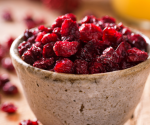What is creatine?: When is the best time to take creatine? |

So you’ve finally decided to hop on the creatine train. Maybe you’ve heard your gym buddy rave about it. Maybe you saw a video where someone gained size, strength, and swagger in just a few weeks.Or maybe you’ve just done your research and realized it’s one of the most tried-and-tested supplements out there. Either way, you’re ready. But now you’re stuck on that one big question: when’s the best time to actually take creatine? Morning? Night? Before your workout? After? While watching Netflix? Let’s clear the confusion and keep it real.
What is creatine?
Creatine is this naturally occurring substance in your body that helps produce energy, especially during quick bursts of intense movement—like lifting heavy weights or sprinting. It’s also found in red meat and seafood, but unless you’re eating pounds of steak every day, supplementation can help top off your muscle stores. And here’s the cool part: once your muscles are “saturated” with creatine (yup, that’s the term), you can perform better, recover faster, and—yes—build muscle more effectively.
What is the best time to have creatine?
Now, onto the big question: when should you take it? Honestly, most people just want to do what’s most effective. Nobody wants to waste time or supplements. But the answer isn’t as dramatic as you might think. A lot of studies have looked into this, and while there are some subtle differences depending on timing, the main takeaway is: consistency matters more than the clock. Whether you’re tossing it into your morning smoothie or chugging it right after a sweaty gym session, what really counts is taking it every single day.That said, some studies do suggest that taking creatine after your workout might have a slight edge. That’s because your muscles are more primed to absorb nutrients post-exercise. Your blood flow is up, your body’s in repair mode, and adding creatine to a post-workout shake—especially one with some carbs and protein—could help drive it into your muscles faster. Is the difference earth-shattering? Probably not. But if you want to maximize every little edge, taking it post-workout might be your move.What about taking creatine before a workout? Totally fine too. Some folks swear it gives them an extra kick, especially when combined with pre-workout drinks. It might help if you’re doing explosive or high-intensity training, but again, the actual performance benefit might not be noticeable unless your muscles are already saturated from consistent use. Think of it like charging your phone overnight. You don’t need to plug it in the second you need it—it’s more about keeping the battery topped off regularly.Now here’s the part people often forget: take it on rest days too. A lot of people assume if they’re not working out, there’s no point in taking creatine. Big mistake. The goal is to keep your muscle creatine levels high all the time, not just on workout days. So even if it’s Sunday, you’re lounging in pajamas and the closest thing to lifting you’re doing is the TV remote—take your creatine. Pick a consistent time, like with breakfast or lunch, and just build it into your routine.It’ll help your body maintain optimal levels without having to “reset” every week.Let’s quickly talk dosage, because that’s a hot topic too. Some people do a “loading phase” where they take 20 grams a day for 5-7 days (split into 4 doses throughout the day) to saturate their muscles faster. After that, they switch to a “maintenance dose” of 3–5 grams per day. Totally optional though. You can skip the loading phase and just take 5 grams a day from the start. It’ll take a little longer to fully saturate your muscles—maybe a few weeks instead of a few days—but you’ll still get all the benefits in the long run.Here’s a fun little twist: creatine isn’t just for gym bros trying to flex in tank tops. There’s a growing pile of research showing it can help with brain function too. We’re talking memory, focus, even mental fatigue. This is especially true for older adults or people under a lot of mental stress. So if you’re someone who spends more time in meetings or behind a laptop than in the squat rack, creatine still might be your best kept secret weapon.Now, what form of creatine should you take? Keep it simple. Creatine monohydrate is the gold standard. It’s been studied the most, it works, and it’s affordable. Don’t get lured into buying overpriced “fancy” versions unless you’ve got money to burn. Just stick with the basics, mix it with water or juice (or your protein shake), and call it a day.
So, what’s the final word?
When it comes to creatine, consistency beats perfect timing. If taking it before your workout fits your schedule, go for it. If after your session is more convenient, awesome. If you prefer to sip it while you scroll through your morning emails, that works too. Just take it every day, don’t stress about the timing, and your body will thank you over time.One last tip before we wrap this up: stay hydrated. Creatine pulls water into your muscle cells, which is part of how it helps them grow and perform better. But that also means you need to keep your water intake up, or you might feel a little bloated or sluggish. Nothing crazy—just aim for your regular daily water goal, and you’ll be golden.
















